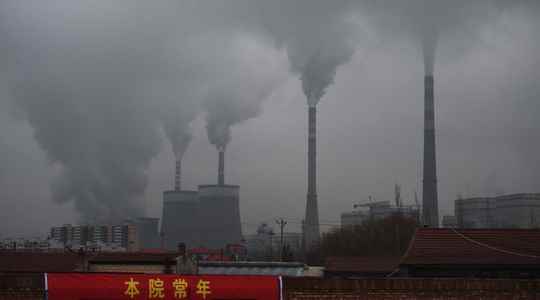A heat wave never seen in sixty years, an unprecedented drought, monster fires. Like many countries, and perhaps more so, China had a nightmarish summer of 2022. A taste of the calamities promised by global warming, to which Beijing has responded… by doubling down on coal. Faced with the collapse of hydraulic dam production, or the surge in electricity demand due to air conditioners, the government had no choice but to increase its production of black rock tenfold. From January to August, 2.93 billion tonnes were mined, up 11% year on year. According to Greenpeace, no less than 8.63 gigawatts of additional coal-fired electricity capacity were authorized in the first three months of the year.
A snub to the planet and the climate, which illustrates Xi Jinping’s double discourse on the issue. This revival indeed eclipses the triumphant accents of the Chinese leader in the spring of 2021, qualifying the country as “a contributor and a pioneer in the construction of ecological civilization on a global scale”. In Glasgow almost a year ago, for COP 26, Chinese diplomats nevertheless arrived in the Scottish capital with two strong promises in their suitcases: a peak in greenhouse gas emissions by 2030, and neutrality carbon before 2060.
“Zigzag” on charcoal
The backlash is severe. Faced with the threat of electricity shortages, because of the quotas established, the “transition” has been erased in favor of “security of supply” in the discourse of Chinese rulers. “Beijing has been zigzagging on coal for thirty years. It constantly navigates between the desire to cap production for environmental reasons and the need to revive economic activity with this cheap energy”, remarks François Godement from the Montaigne Institute.
While the collapse of the economy has led to an 8% drop in CO2 emissions in the second quarter, which has never been seen before, will the expected rebound sweep away the fine promises? “There is a real decline in the share of coal in electricity production [NDLR : environ 60% aujourd’hui] in trend, wants to believe Lauri Myllyvirta, of the Center for Research on Energy and Clean Air. The progress of solar and wind energy is much faster than expected. By maintaining this pace, it is quite possible that emissions related to electricity production will peak before 2025,” says the expert.
Beijing’s sincerity on the climate plan will undoubtedly be measured by the ingredients of the recovery. The whole question is whether it will decide to return to the massive infrastructure and construction plans as in the past. China must also be more voluntary internationally. While Beijing pledged to cut funding for the construction of new coal-fired power plants a year ago, many are still in the planning stage, such as in Mongolia, Laos or Vietnam. Will they remain in the boxes of the Chinese government?
Find all the episodes of our series here:
EPISODE 1 –China: the dangerous obsession with the “zero Covid” policy
EPISODE 2 –An economy undermined by debt, Xi Jinping’s failed bet
EPISODE 3 –Less TikTok, more quantum: in China, a Tech sector under control
EPISODE 4 –Xi Jinping, an aggressive diplomacy that united the West
EPISODE 5 –How China’s Image Has Been Tarnished
EPISODE 6 – Taiwan: why China’s strategy risks backfiring
